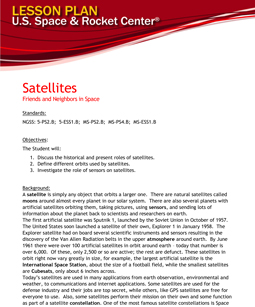Introduction
Welcome to the virtual outreach unit on Satellites from The U.S. Space and Rocket Center! We would like to thank the Northrop Grumman Foundation for their generosity in sponsoring the development of this unit. In this unit you will find many resources that will help you provide an exciting and educational experience for your students. From introductory concepts to career connections, in addition to activities and lesson plans, we hope you find everything you need for a successful teaching experience. Please see below for a detailed listing of the unit:
- Pre-Activity Resources – This document provides links to articles and videos that provide introductory information about satellites; how they work and what they do.
- Interview with a Payload Integration Manager – This video highlights the career and educational experiences of a former manager of NASA’s Space Launch System’s Payload Integration Office at Marshall Space Flight Center.
- Activity – This document provides background information about satellite orbits, as well as some of the basic concepts of remote imaging. There are also videos that demonstrate the activities.
- Continue Learning – This document includes links to help continue engagement. The links include videos, and articles, as well as additional activities.
Pre-Activity Resources
Check Out the Satellites! (SciShow Kids)
How do Satellites Work? (Lesics)
How Do Satellites Get & Stay in Orbit? (SciShow Space)
Subject Matter Expert
Activity
A satellite is simply any object that orbits a larger one. There are natural satellites called moons around almost every planet in our solar system. There are also several planets with artificial satellites orbiting them, taking pictures, using sensors, and sending lots of information about the planet back to scientists and researchers on earth. The first artificial satellite was Sputnik 1, launched by the Soviet Union in October of 1957. The United States soon launched a satellite of their own, Explorer 1 in January 1958. The Explorer satellite had on board several scientific instruments and sensors resulting in the discovery of the Van Allen Radiation belts in the upper atmosphere around earth. By June 1961 there were over 100 artificial satellites in orbit around earth – today that number is over 6,000. Of these, only 2,500 or so are active; the rest are defunct. These satellites in orbit right now vary greatly in size, for example, the largest artificial satellite is the International Space Station, about the size of a football field, while the smallest satellites are Cubesats, only about 6 inches across. Download "Satellites" activity (pdf)
This curriculum is made possible by the generous support of the



